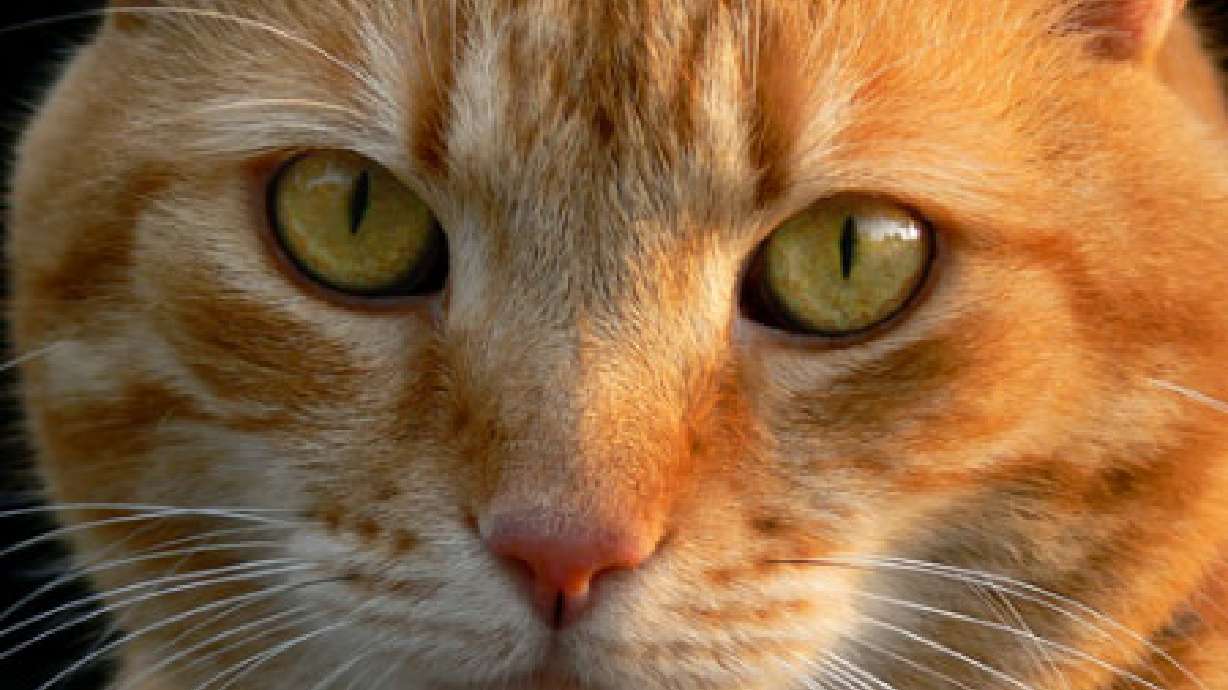Estimated read time: 4-5 minutes
This archived news story is available only for your personal, non-commercial use. Information in the story may be outdated or superseded by additional information. Reading or replaying the story in its archived form does not constitute a republication of the story.
We know you would never intentionally do anything to harm your furry friend. But while your caretaking may be based upon well-meaning advice and information, there are mistakes that even seasoned pros might make. So read on and find out how to avoid potential cat-astrophes.
Mistake 1: Not "cat-proofing" your house. Your cat depends upon you to make sure that any hazardous materials are out of his reach. Just as you would safeguard your house for a small child, remember that cats, especially kittens, have no more understanding of what is and isn’t off limits. Keep window blind cords out of reach, along with any breakable objects. Make electrical cords “chew-proof” by covering accessible lengths with long plastic tubing you’d find at the hardware store. Keep household cleaners in a locked cupboard and close off rooms where you wouldn’t want your new pet to explore. Materials like plastic wrap, bags and aluminum foil are especially hazardous.
The most problematic toys are ones that are too small and can be ingested.
Mistake 2: Wrong toy at play time. The classic picture of a kitten at play is it chasing after a ball of yarn. However, that may not be the best choice of toys. String or yarn can cause choking or strangulation. Try a wide grosgrain ribbon that doesn’t fray instead. Beware of toys that are cheaply made, aren’t one solid piece or appear as if they’ll fall apart with too much activity. Latex toys are especially dangerous because they’ll disintegrate in time. According to Jennifer Zablotny, an AAHA veterinarian, the most problematic toys are ones that are too small and can be ingested. So use common sense and consider supervising your pet during play time.Mistake 3: Not keeping environment clean. How often do you change the sheets on your bed? When was the last time you washed your cat’s bedding? Make sure you choose a washable pillow and blanket. Bedding should be washed weekly in a natural laundry detergent (try your local health food store) and rinsed well to keep skin irritation at a minimum.
As far as kitty litter, the ASPCA’s pamphlet “Responsible Pet Ownership” recommends keeping the box at least half-full and changing once a week, unless you have more than one cat. It also suggests that abruptly changing the type of litter you use can cause emotional distress. And what of the area around your cat’s litter box? The walls and floor should also be thoroughly cleaned with a disinfectant each week.
Mistake 4: Too much room to roam. No doubt your cat will enjoy the outdoors. Depending on your location, you may have the luxury of rolling hills and pristine fields for your cat’s exploration. If you live in an urban area, however, remember that in a contest between a cat and a cab ... the cab usually wins. Even if you do have miles of grass and gardens, remember that there are poisonous plants that your cat may come in contact with. Lilies, philodendrons and dieffenbachia are harmful if ingested.
You should also be concerned with losing your cat if you let him venture outdoors. The Homeless Pet Foundation says that only a quarter of lost, untagged animals are ever reunited with their owners. Make sure your cat is tagged at all times. You also might want to talk to your vet about microchipping. Microchips are a type of ID that has become more accessible in recent years, but they’re still a complement to tags, not a replacement for them. It’s an easy, painless procedure where a small informational chip is implanted just beneath the skin’s surface. The chip is encased in nonreactive glass and contains a unique identification number.
Mistake 5: Too many tasty treats. Sometimes, you may think the only reason your cat makes an appearance at home is to eat. Never fear, their devotion goes beyond what you feed them, but don’t try to win them over with too much of their favorite fare. Jean Hofre, DVM, says that the average adult cat requires only 30 kilocalories a day per pound of weight.
And even though tidbits from your own plate may make your furry friend purr with delight, treats shouldn’t exceed 15 percent of their overall caloric intake each day. Cats also require two to three times more protein than dogs. This supports the idea that canned foods are better than dry foods, which usually contain more carbohydrates. Try offering a variety of two to three different cat foods so they don’t become dependent upon one brand, and always serve food at room temperature, which will lessen digestive upset. Fluids are very important, especially water, so if you give them milk, dilute it with a little water. Never feed them cream (no matter how much they ask!) because it’s simply too rich.
Remember, cats only have one life. Make sure it’s a long and happy one.
Kim Grant has written for magazines like LDSLiving, the Washington Family, Back Home, Parents & Kids and Natural Life. She has two novels with Covenant Communications. Visit her at www.kcgrant.com.








